how to play the Recorder
Learn how to have fun playing the Recorder
It’s brilliant that you’ve got your recorder, but what comes after that? Discovering how to play is definitely the next logical step. This part of our Beginner’s Guide to Learning the Recorder will set you on the perfect path forward.
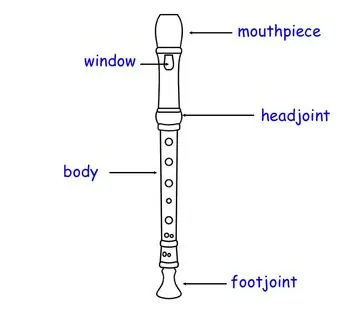
Recorder Basics:
- Blow through the mouthpiece or to make a sound
- Cover the holes with your fingers and thumb – left hand above right hand
- Do not bite the recorder or allow it to touch your teeth – support it with your lips only
How To Assemble and Look After My Recorder:
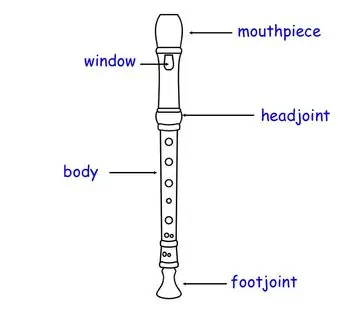
Recorders usually come in three separate parts; the top joint with the mouthpiece, the body of the recorder and the bottom joint which has a slight bell shape. Gently twist these three parts together and away you go!
After playing your recorder clean it by using the cleaning stick and a handkerchief, piece of cloth or even a sock wrapped around it to get rid of any moisture.
Breathing
Like all wind instruments, you make a sound on the recorder by using your breath. It is important to take relaxed, deep breaths by dropping your jaw and breathing into the bottom of your lungs. You can try this without a recorder first if you like!
Making A Sound
It is important to blow gently to get a beautiful mellow sound on the recorder – if you blow too hard then you will get a harsh sound or it might squeak! Think about blowing your air in a constant, even stream over a long note. Try without any fingers covering the holes first.
How To Play Different Notes On Your Recorder
Now you’ve made a sound it’s time to learn some different notes. Most people start with the note B.
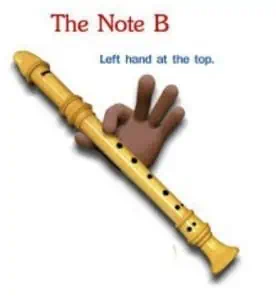
Left hand:
Thumb covers the hole at the back of the recorder
The first finger covers the hole closest to your mouthpiece at the front of the recorder.
Right Hand:
Thumb rests at the back of the recorder (not on a key)
Once you’ve got the hang of B you can try some other notes. You can gradually cover more holes to play down to a low C. In general, the more fingers you put down, the lower the note should sound. As you add more fingers you will have to blow a little more as your air has to travel further down the recorder. However, don’t blow too hard or the note might end up too high.
Use this fingering chart to help you play different notes.
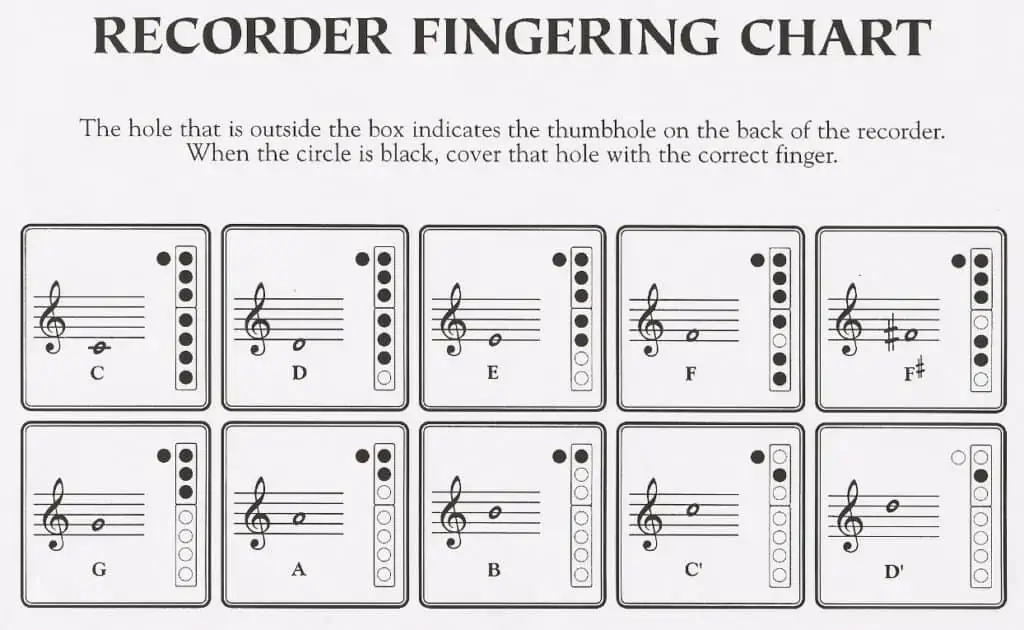
Congratulations you can now play 10 different notes on the recorder!
Take your time to get comfortable with these finger combinations as these are the basis of many other notes on the recorder. Playing long notes is a great idea to improve your sound quality and breath control. Remember to keep your shoulders relaxed.
Higher Notes On The Recorder
Playing notes above a D requires a new technique called Pinching the Thumb. Use the tip of your thumb to cover around 2/3rds of the hole and the note should become much higher in pitch. You may also need to blow a little more air to reach these higher notes.
The good news is that you can keep all your other fingers the same for lots of these new high notes!
Use this fingering chart to learn how to play all the low, middle and high register notes on the recorder.
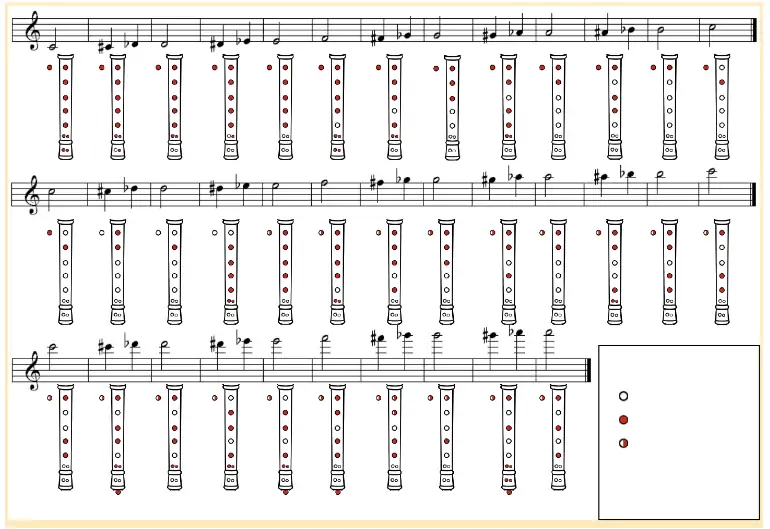
How To Play the Recorder - Summary
By now, you should be able to:
– know the different parts of the recorder.
– breath properly when playing the recorder
– start playing notes on the recorder
Now it’s time to improve your technique…
About the Author
Chloë Vincent
Chloë is a graduate of the Guildhall School and concert highlights include the BRIT awards with Billie Eilish, The Who at Wembley Stadium and performing for the Queen at Buckingham Palace. Chloë regularly records at studios such as Abbey Road, working for artists such as Kanye West, Madonna and Michael Kiwanuka as well as film sessions. Orchestral work covers tours of China and Japan and performing at the Musikverein in Vienna. Chloë lives in Oxfordshire with her trumpeter husband and enjoys cooking and playing board games in her spare time.
Twitter - @chloeflute
Other posts by this author
Twitter - @chloeflute
Sign up Below – Or Lose Out…
Have you been losing out? Most of us get bombarded with e-mail messages, but I can promise there is one you’ll not want to miss; our 4 Feature Friday email.
Every Friday, I’ll send you a quick email in order to treat you to a few of the fantastic stuff that I’ve recently found out.
Music. Musicians. Gadgets. Musical instruments.
To be able to tour the planet means I’ve encountered things I’d never imagine. And that’s what I’d like to share with you. So simply click below to get entry now.
Read the next post in this series:




